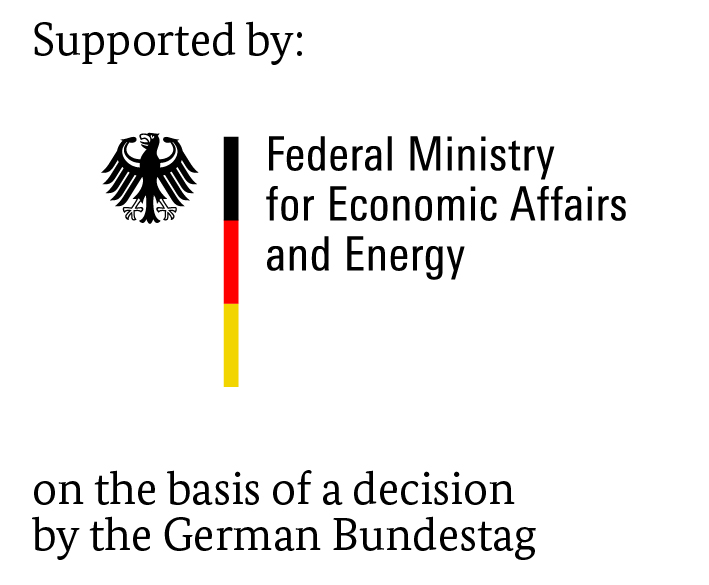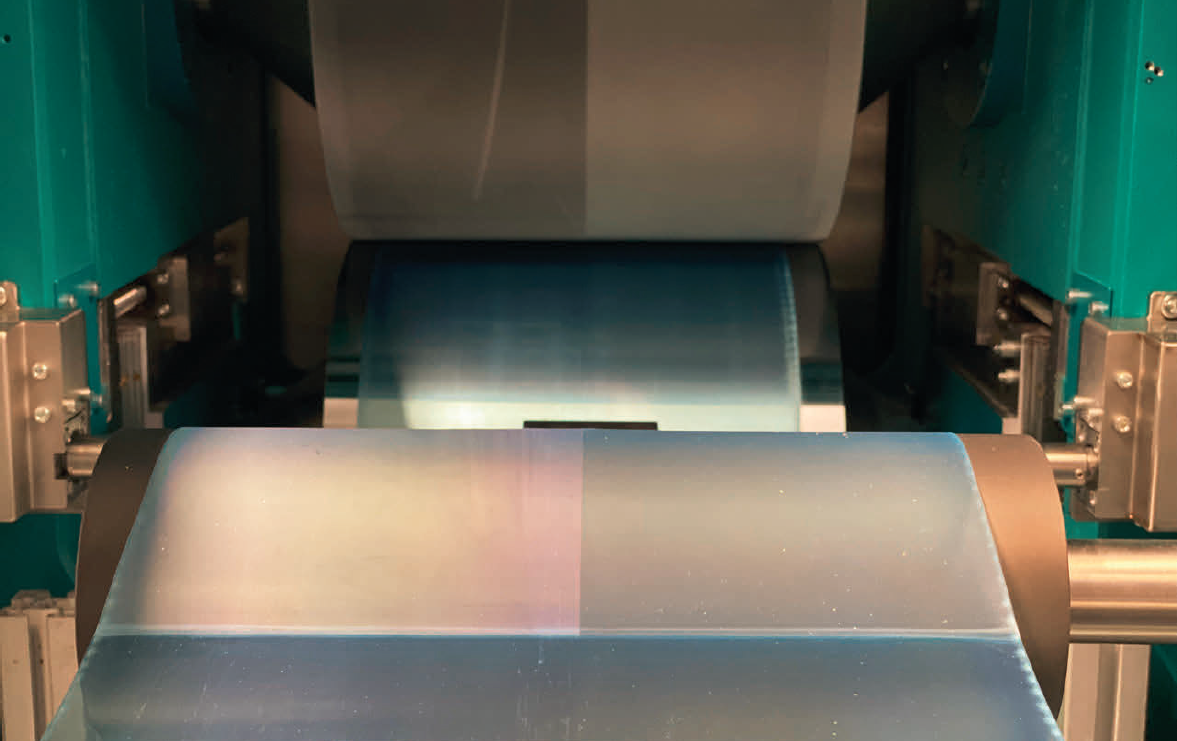The formation of ice on surfaces is a major problem in many areas. At Fraunhofer IGB, we are developing a passive anti-icing system as part of the InTEnt-H project funded by the German Federal Ministry for Economic Affairs and Climate Action. The unique and resource-saving anti-icing coating on self-adhesive, transparent and erosion-stable PU films is generating considerable cost savings and significant increases in the efficiency of active de-icing systems.
InTEnt-H – Innovative technologies for a de-icing system of small and medium helicopters
Self-adhesive films for environmentally friendly aircraft anti-icing
The formation of ice on surfaces is a major problem in many areas. This means that aircraft wings and moving parts of helicopters that have frozen over after being exposed to snow or rain combined with below-freezing temperatures need to be de-iced in a laborious process using de-icing agents. This is because ice on the wings impairs their aerodynamic properties, potentially by cutting off the laminar flow needed to provide lift. The weight of the ice also poses a risk to the operation of the aircraft. However, the standard process for de-icing passenger and transport aircraft and helicopters in the winter months not only involves significant quantities of environmentally harmful chemicals, but also adds to the carbon footprint of air travel.
During flight, an active de-icing process takes place: either the wings are heated with resistance heaters that are laminated into them, or hot exhaust air from the engines is diverted to the front of the wings (bleed air technique). The effect is both costly and harmful for the climate: It can increase fuel consumption by as much as 30 percent.
The ideal solution for the problem of ice formation is a water-repellent material that only allows ice to form very slowly, or that reduces adhesion between the ice and the surface.
New passive anti-icing system
A passive anti-icing system is being developed in the Functional Surfaces and Materials innovation field as part of the InTEnt-H project funded by the German Federal Ministry for Economic Affairs and Climate Action (BMWi). A unique and resource-saving anti-icing coating on self-adhesive, transparent and erosion-stable PU film is generating considerable cost savings and significant increases in the efficiency of active de-icing systems.
As well as this, we are now also able to produce layers that are both water-repellent and ice-repellent. These layers are produced using two separate roll-to-roll processes that use low-pressure plasma (pressure p < 1 mbar) in combination with a microstructure on which water remains fluid for long periods even at temperatures below 0°C. In ideal conditions, no ice will form on this microstructure at all. This is because the structured layers provide very few nuclei on the surface for the freezing water to crystallize around, so it remains in a supercooled state. Even when the water does freeze, less ice adheres to surfaces coated with this type of anti-icing system than to uncoated surfaces. We achieved a 6 kelvin reduction in the freezing point and a 90 percent reduction in ice adhesion on the developed film compared to a reference surface.
Outlook
In order to address environmental concerns even further, we are currently conducting in-depth research into silicone-like coatings with consistent water- and ice-repellent properties. We also intend to gradually expand the material portfolio of deployable films. The increased potential for variation in the two separate roll-to-roll processes for structuring and coating allows us to produce larger quantities of strip products on an individual basis compared to a batch process. Thanks to the process optimization, it is now possible to adapt the anti-icing system in a rapid and targeted way to specific requirement profiles.
Project information
Project title
InTEnt-H – Innovative technologies for a de-icing system of small and medium helicopters
Project duration
January 2018 – December 2022
Project partners
- Airbus Helicopters Deutschland GmbH, Donauwörth
- Deutsches Zentrum für Luft und Raumfahrt e.V. – Institut für Flugsystemtechnik (FT) und Institut für Faserverbundleichtbau und Adaptronik (FA), Braunschweig
- Fraunhofer IGB, Stuttgart
- TU Braunschweig – Institut für Adaptronik und Funktionsintegration, Braunschweig
Funding
We would like to thank the German Federal Ministry for Economic Affairs and Climate Action (BMWi) for funding the project "InTEnt-H", promotional reference 20Y1702.

 Fraunhofer Institute for Interfacial Engineering and Biotechnology IGB
Fraunhofer Institute for Interfacial Engineering and Biotechnology IGB